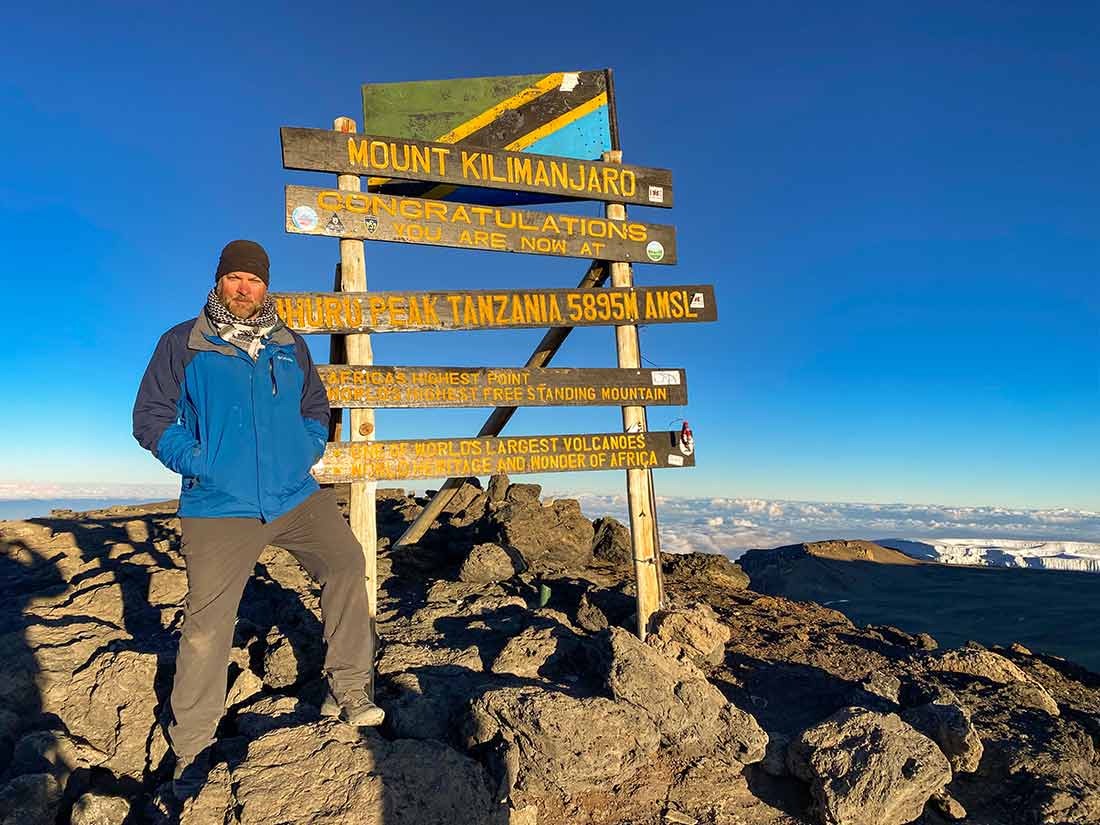How fit do you have to be to climb Kilimanjaro? The easy answer is to be in the best shape of your life. But keep reading to find out more.

It is not easy to climb Kilimanjaro. There are many obstacles that can keep you from reaching the summit. Many of them are beyond your control. Some of these unforeseen obstacles include:
- Cancellations of flights
- Delays in flights
- Loss or delay of luggage
- Bad weather
- Injuries or illness
Here are some travel and preparation tips on how to prevent or at least prepare for these items.
Flight Issues
Arrive one day earlier than your scheduled day to reduce your chances of missing your climb due to flight cancellations or delays. Every group climb has an arrival day built in. For example, your itinerary shows an arrival date of the 4th and a climb date of the 5th. We recommend you arrive on the 3rd in case of flight problems or lost luggage and to recover from your long flight.
 Loss or delay of luggage
Loss or delay of luggage
If your bags do not arrive at Kilimanjaro International Airport, notify our driver immediately. One of our staff members will locate them. We will assist you with the rental of replacement gear if your bags are lost. To minimize the impact of lost luggage on your climb, use your 35-liter daypack as a carry-on. It should contain everything you need for your first few days on the mountain.
Bad Weather
We cannot control the weather, but we can prepare you for it. You should have plenty of layers so you can add or remove them according to the temperature.
In the rainforest, it is usually hot, humid, and wet. In the Heather/Moorland zone, it is cold at night and warm during the day. The Alpine Desert zone is similar, but the temperatures are cooler at night and do not warm up as much during the day. The Summit zone usually experiences chilly, windy, and potentially snowy conditions at night and chilly, windy, and snowy conditions during the day. Watch this video to learn what to wear on Kilimanjaro.
Illness and Injury
You can’t prepare for an injury. We hope you don’t have any issues on the mountain. However, our guides are trained to deal with any medical emergency if it arises. They are Wilderness First Responder Certified and trained on evacuation procedures and daily health checks.
AMREF Flying Doctors Evacuation Insurance is included when you book with Kilimanjaro Sunrise. If needed, you can be airlifted to the hospital by helicopter.
Why are we discussing all of these issues when the title of the article is “Am I Fit Enough to Climb Kilimanjaro?”
Well, that’s easy. Everything we have discussed up to this point is beyond your control. Being fit, however, is within your power.
How Fit Should I Be?
You should be in the best shape possible. Not only is climbing Kilimanjaro easier when you have trained for it, but studies have also shown that you are less likely to suffer from Acute Mountain Sickness when you have trained.
Kilimanjaro is not an easy mountain to climb. The majority of climbers have never hiked for such a long period of time. It can be both physically and mentally taxing.
A technique we use to help you acclimate better is to hike at a very slow pace. This allows your body to adapt to drastic elevation changes. Except for summit day, you hike only a few hours each day.
On most days, you’ll arrive at camp in the afternoon. Give yourself time to recover by eating and drinking plenty of food and water. Tend to any issues, like hot spots or blisters, and rest.
Training
We recommend training for a minimum of 12 weeks prior to your Kilimanjaro trip. We recommend hiking as much as you can. Hiking should be the foundation of your training. It doesn’t matter if you don’t have hills or mountains. Walk on a greenbelt, path, or up and down stairs.
Add a backpack as hiking becomes easier.
Each week, add more weight to the pack. On Kilimanjaro, your daypack should weigh no more than 15 pounds, but you should train with more weight.
You should also go to the gym in addition to hiking or walking. When you are in the gym, use the Stairmaster. Exercise your legs with light weights as well. As your climb dates approach, you should increase your workout intensity and weight. Take longer, more difficult hikes as your climb dates approach.
Additionally, you should plan overnight backpacking hikes. Sleeping on the ground in a tent with a sleeping bag and sleeping pad will quickly become second nature. This will make sleeping on Kilimanjaro easier.
Please note: Once you exit the rainforest, there are no trees to hang from, so hammocking is not an option.
To see our more in-depth workout, go here: https://kilimanjarosunrise.com/how-to-prepare/#train
 Age
Age
When is it too old to climb Kilimanjaro? Age is only a number. It is never too late to climb. In 2017, Dr. Fred Distelhorst broke the world record for the oldest person to summit Kilimanjaro. He was 88 at the time. Just two years later, Anne Lorimor broke the record for the second time. She was 89.
So are you fit enough to climb Kilimanjaro? You can be, but be sure to consult your doctor first and train hard.


